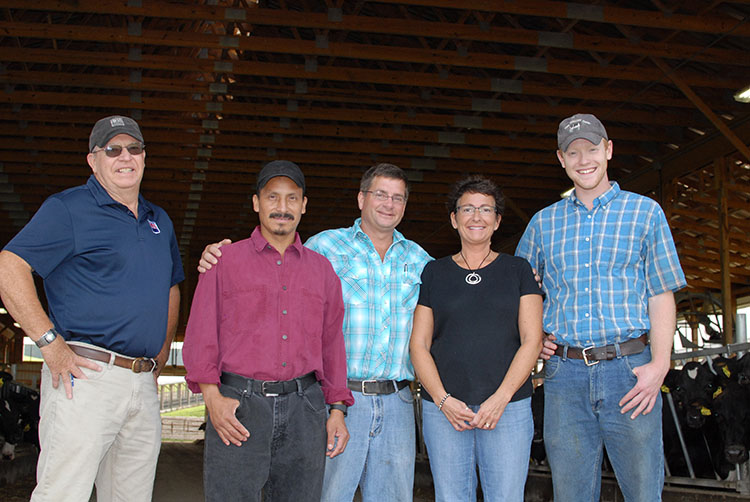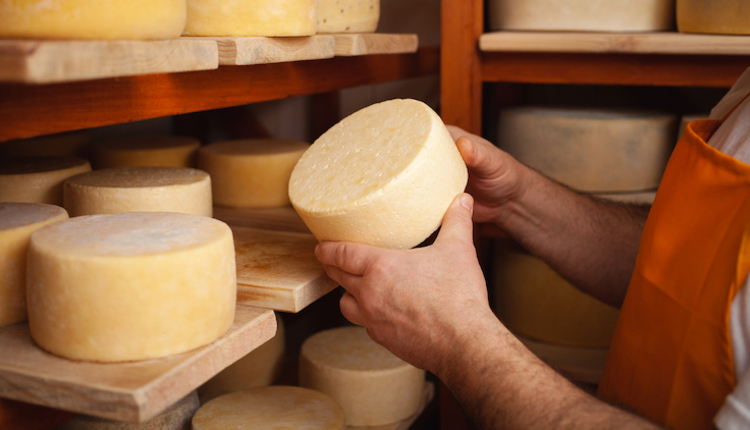
“We place postfresh cows, 1 to 45 days in milk, into one of two groups: first-lactation only and second-lactation and greater cows,” said Dale Mattoon, a Platinum Winner of the Dairy Cattle Reproduction Council’s ninth annual awards competition. “At Day 45, first-lactation cows go to a first-lactation-only high group. The second-lactation cows move to one of two high-group pens, depending on frame size . . . small-framed cows or large-framed cows,” said the Locke, N.Y. dairyman who operates Pine Hollow Dairy with his wife, Colleen.
“We continue this same grouping philosophy in the milking pens, dry cow pens, and calving pens. We have learned the less we overcrowd our groups, the better performance we seem to achieve. We try to limit stocking density to 110 percent,” he went on to say.
All six of this year’s Platinum winners of the Dairy Cattle Reproduction Council’s awards share additional insight in this Hoard’s Dairyman Intel as well as the Round Table found on pages 707 to 709 of the November issue of Hoard’s Dairyman. This year a record 128 herds were nominated for the award from 18 U.S. states and Canadian provinces.
Here are additional responses to the question, “How do you manage fresh cows?”
Copperhill Farm, Fairfax, Vt.: We try to ensure a healthy transition period. This starts with late-lactation animals by controlling energy through far-off and is followed by ensuring a smooth transition onto close-up dry diet. Healthy fresh cows with strong appetites will help minimize body condition loss postcalving.
Postcalving, second-lactation and greater cows are given a Bovikalc calcium bolus. Cows are grouped into two high groups: first and second lactation in one group, third and greater in the other. All cows less than 30 days fresh are tail chalked with florescent pink to keep a closer eye on them
Dunlea Dairy Farm, Coudersport, Pa.: Fresh cows and heifers spend the first 4 to 12 hours on a bedded pack. Then the older cows and first-calf heifers are kept in separate fresh pens for 20 to 35 days. We try to keep stocking density under 90 percent.
Pfeifer Dairy Farm, Bucyrus, Ohio: Fresh cows are milked in a separate parlor for two to three days. This allows us to closely monitor these special needs cows until all systems are a go. We use a straw diet for dry cows to keep a good rumen fill at this time.
Seidl Mountain View Dairy, Luxemburg, Wis.: We conduct daily pen checks in our fresh cow pens using our fresh cow protocols. We always have one dedicated person checking fresh cows and many times two. All cows are given as much as 10 gallons of warm water along with additives immediately after calving. All fresh second-lactation or greater cows receive extra calcium and probiotics at freshening. The fresh pen is milked four times a day.
SunBurst Dairy, Belleville, Wis.: After cows calve, each is moved to a postfresh group. There, Alfonso Perdomo monitors temperature, feed intake, and general health. If there is an issue, we take action.
In the postfresh group, our goal is to keep it understocked. For cows that have had past health issues, we will have our vet check them before they enter the breeding program. Nutritionist James Bailey walks the herd every week and monitors body condition score (BCS) and evaluates forages in the ration.
This Hoard’s Dairyman Intel article is part of an eight-part series detailing top reproduction tips from the Platinum-winning herds for the ninth annual Dairy Cattle Reproduction Council awards competition.
To comment, email your remarks to intel@hoards.com.
(c) Hoard's Dairyman Intel 2016
November 7, 2016








